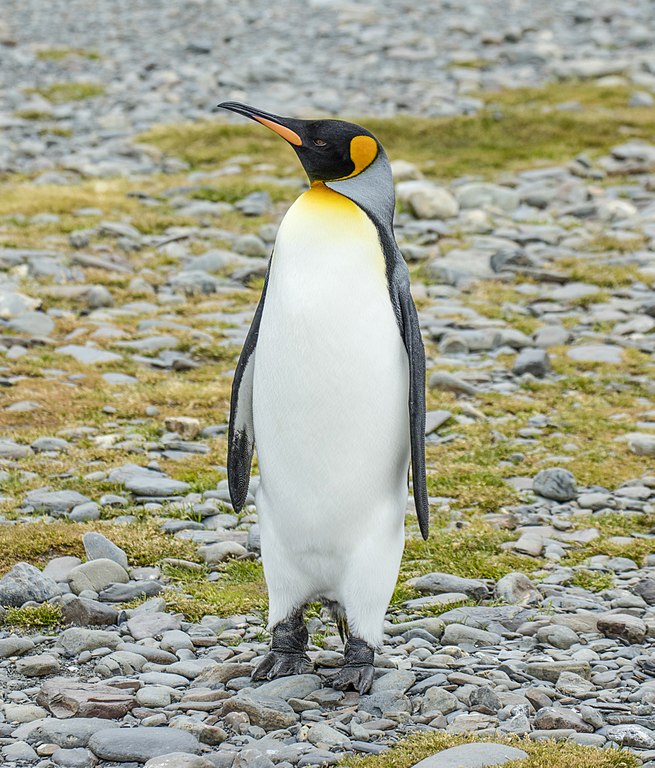Difference between revisions of "Template:Westarctica.wiki:Today's featured article"
Westarctica (talk | contribs) |
Westarctica (talk | contribs) |
||
| Line 6: | Line 6: | ||
American zoologist Gerry Kooyman revolutionized the study of penguin foraging behavior in 1971 when he published his results from attaching automatic dive-recording devices to emperor penguins, and recording a dive of 235 meters (771 ft) by a king penguin in 1982. | American zoologist Gerry Kooyman revolutionized the study of penguin foraging behavior in 1971 when he published his results from attaching automatic dive-recording devices to emperor penguins, and recording a dive of 235 meters (771 ft) by a king penguin in 1982. | ||
'''([[ | '''([[king penguin|Full Article...]])''' | ||
Revision as of 16:04, 3 August 2019
The king penguin (Aptenodytes patagonicus) is a large species of penguin, second only to the emperor penguin in size. There are two subspecies: A. p. patagonicus and A. p. halli; patagonicus is found in the South Atlantic and halli found at the Kerguelen Islands and Crozet Island, Prince Edward Islands, Heard Island and McDonald Islands, and Macquarie Island.
King penguins eat small fish, mainly lanternfish, and squid. They are less reliant on krill and other crustaceans than most Southern Ocean predators. On foraging trips king penguins repeatedly dive to over 100 meters (300 ft), and have been recorded at depths greater than 300 metres (1,000 ft). King penguins breed on the subantarctic islands at the northern reaches of Antarctica, South Georgia, and other temperate islands of the region. King penguins do not live or breed in Westarctica.
American zoologist Gerry Kooyman revolutionized the study of penguin foraging behavior in 1971 when he published his results from attaching automatic dive-recording devices to emperor penguins, and recording a dive of 235 meters (771 ft) by a king penguin in 1982.
